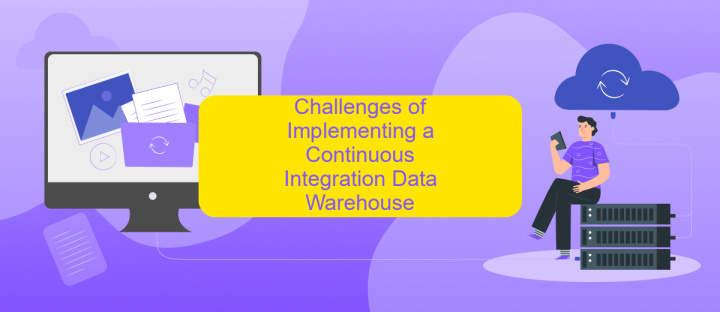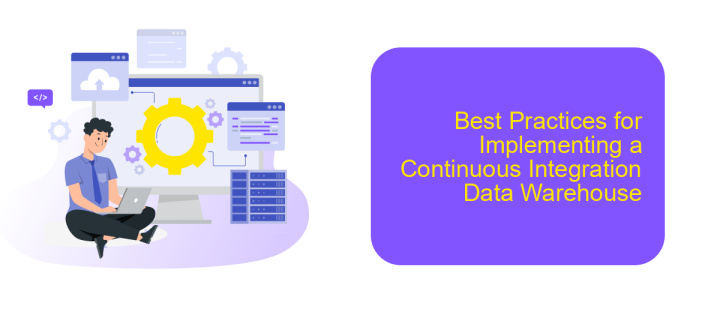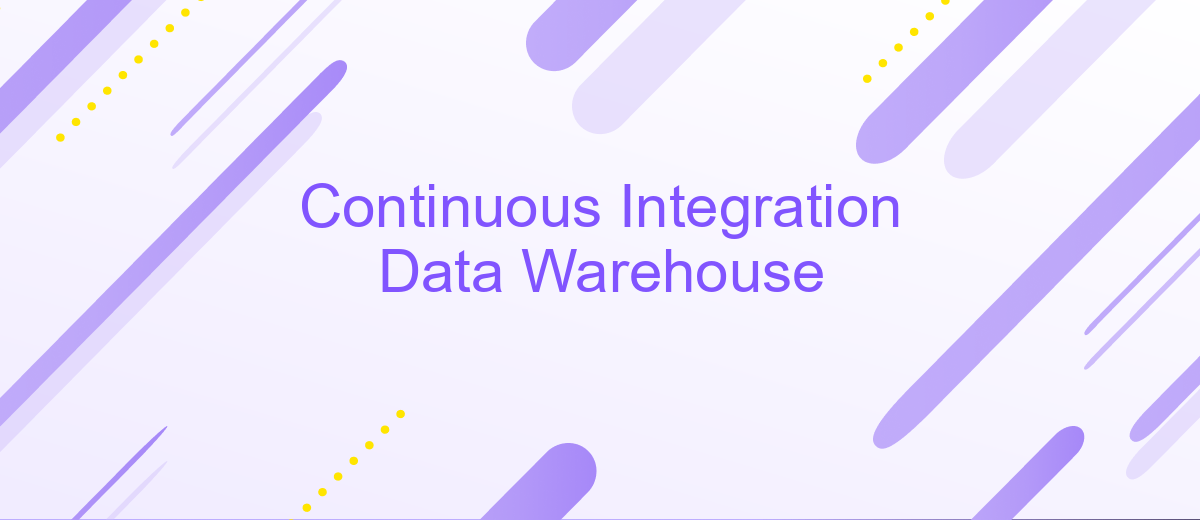Continuous Integration Data Warehouse
Continuous Integration (CI) is revolutionizing the way data warehouses are managed and developed. By integrating automated testing, version control, and continuous deployment, CI ensures that data pipelines are reliable, scalable, and maintainable. This article explores the benefits of applying CI practices to data warehousing, highlighting how it enhances data quality, reduces downtime, and accelerates development cycles.
Introduction
Continuous Integration (CI) is a fundamental practice in modern software development that emphasizes the frequent integration of code changes into a shared repository. This practice helps to identify and resolve conflicts early, ensuring a more stable and reliable codebase. When applied to data warehousing, CI offers significant benefits, including improved data quality, faster deployment cycles, and enhanced collaboration among teams.
- Automated testing and validation of data pipelines
- Streamlined deployment processes for ETL (Extract, Transform, Load) tasks
- Real-time monitoring and alerting for data inconsistencies
- Seamless integration with various data sources and tools
Utilizing services like ApiX-Drive can further enhance the CI process in data warehousing. ApiX-Drive offers robust integration capabilities, allowing teams to effortlessly connect different data sources, automate workflows, and ensure that data is consistently accurate and up-to-date. By leveraging such tools, organizations can achieve greater agility and efficiency in managing their data warehouses.
Benefits of a Continuous Integration Data Warehouse

A Continuous Integration Data Warehouse offers numerous benefits, significantly enhancing data management and operational efficiency. By automating the integration process, it ensures real-time data updates, reducing the risk of errors and inconsistencies. This leads to more accurate and timely insights, empowering businesses to make informed decisions swiftly. Additionally, it streamlines workflows by eliminating manual data entry, saving valuable time and resources.
Implementing a Continuous Integration Data Warehouse also improves scalability and flexibility. As businesses grow, the system can effortlessly handle increased data volumes and complexity. Tools like ApiX-Drive facilitate seamless integration across various platforms, ensuring that data flows smoothly between systems without requiring extensive custom coding. This not only simplifies the setup process but also allows for easy maintenance and updates, further enhancing the overall efficiency and effectiveness of the data warehouse.
Challenges of Implementing a Continuous Integration Data Warehouse

Implementing a Continuous Integration Data Warehouse presents several challenges that organizations must address to ensure seamless data flow and integration. The complexity of integrating various data sources, maintaining data quality, and ensuring real-time updates are some of the key hurdles.
- Data Source Integration: Integrating multiple data sources with varying formats and structures can be complex. Tools like ApiX-Drive can simplify this process by providing automated data transfer and synchronization.
- Data Quality Management: Ensuring the accuracy, consistency, and reliability of data is crucial. Implementing robust validation and cleansing processes is essential to maintain data integrity.
- Real-Time Updates: Achieving real-time data updates requires efficient data processing and low-latency systems. This often involves optimizing database performance and leveraging streaming data technologies.
Addressing these challenges requires a combination of advanced tools, strategic planning, and continuous monitoring. By leveraging services like ApiX-Drive for seamless data integration, organizations can streamline their Continuous Integration Data Warehouse processes, ensuring reliable and up-to-date data for decision-making.
Best Practices for Implementing a Continuous Integration Data Warehouse

Implementing a Continuous Integration (CI) Data Warehouse requires careful planning and adherence to best practices. To begin with, ensure that your data warehouse architecture is scalable and flexible enough to accommodate future growth and changes. This involves selecting the right tools and technologies that can seamlessly integrate with your existing systems.
Next, automate as much of the CI process as possible. Automation minimizes human error and ensures that data is consistently and accurately integrated. Tools like ApiX-Drive can be instrumental in setting up automated workflows, connecting various data sources, and ensuring real-time data synchronization.
- Establish clear data governance policies to maintain data quality and compliance.
- Regularly monitor and audit your CI processes to identify and resolve issues promptly.
- Implement robust security measures to protect sensitive data and ensure regulatory compliance.
- Provide continuous training for your team to keep them updated on best practices and new technologies.
Finally, maintain comprehensive documentation of your CI processes, tools, and configurations. This documentation will serve as a valuable resource for troubleshooting, onboarding new team members, and ensuring the continuity of operations. By following these best practices, you can create a robust and efficient CI Data Warehouse that meets your organization's needs.


Conclusion
In conclusion, the implementation of Continuous Integration (CI) in a data warehouse environment offers significant benefits, including enhanced data quality, faster deployment cycles, and improved collaboration among team members. By automating the integration and testing processes, CI minimizes the risk of errors and ensures that data is consistently accurate and up-to-date. This leads to more reliable analytics and better decision-making capabilities for organizations.
Moreover, leveraging services like ApiX-Drive can further streamline the integration process by providing seamless connectivity between various data sources and the data warehouse. ApiX-Drive's user-friendly interface and robust functionality make it easier to set up and manage integrations, reducing the time and effort required for manual configurations. Ultimately, adopting CI practices and utilizing integration services like ApiX-Drive can significantly enhance the efficiency and reliability of data warehouse operations, driving better business outcomes.
FAQ
What is Continuous Integration (CI) in the context of a Data Warehouse?
Why is Continuous Integration important for Data Warehousing?
How can I automate data integration tasks in my Data Warehouse?
What are the key components of a CI pipeline for a Data Warehouse?
How do I handle schema changes in a Data Warehouse with CI?
Time is the most valuable resource in today's business realities. By eliminating the routine from work processes, you will get more opportunities to implement the most daring plans and ideas. Choose – you can continue to waste time, money and nerves on inefficient solutions, or you can use ApiX-Drive, automating work processes and achieving results with minimal investment of money, effort and human resources.

